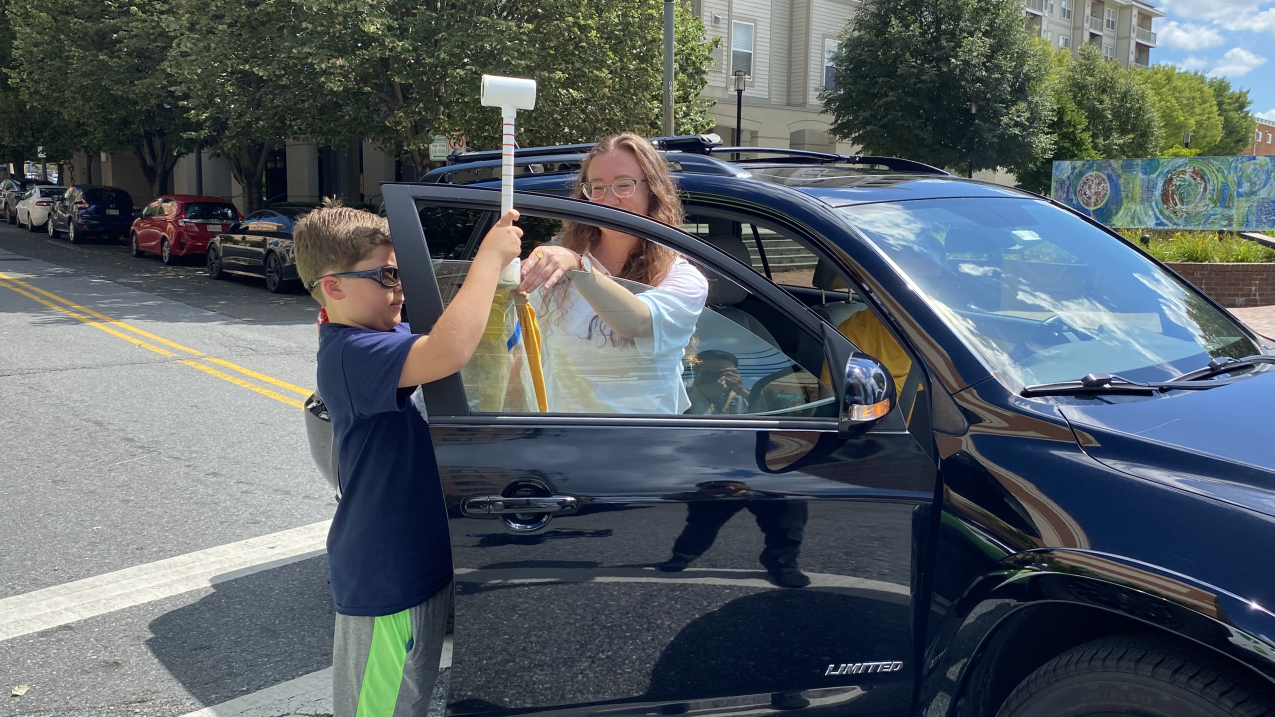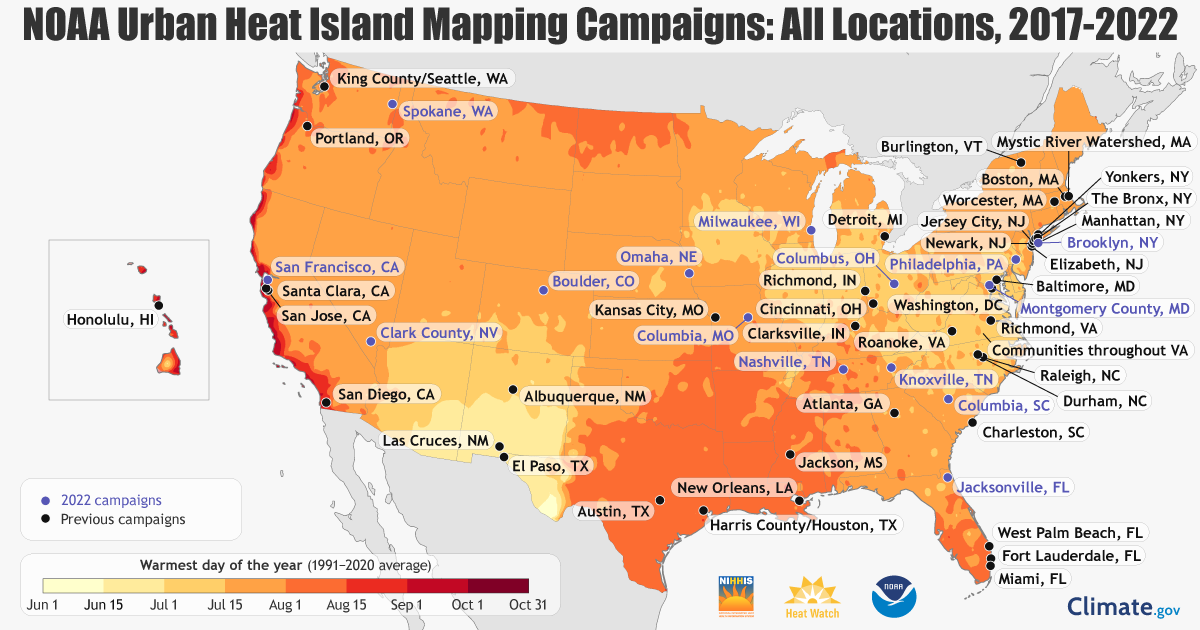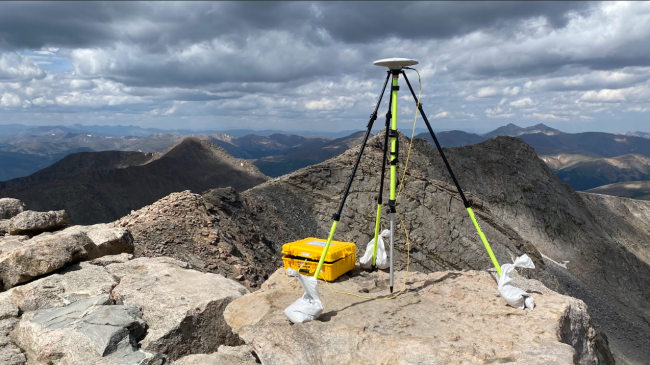Communities must apply by December 16 for heat mapping project

Nicholas Mullenix, volunteer from Bethesda, Maryland, and Morgan Zabow, NOAA Climate Program, Climate and Health Communications and Outreach Coordinator, attach the heat sensor to a car before they head out to collect heat data on August 7, 2022, as part of the Montgomery County Urban Heat Island mapping campaign. (Image credit: NOAA)
Organizations interested in better understanding extreme heat in their communities are encouraged to apply for the 2023 Urban Heat Island (UHI) mapping campaign program, managed by NOAA’s National Integrated Heat Health Information System (NIHHIS), in partnership with CAPA Strategies LLC offsite link.
In the seventh year of the program, NIHHIS and CAPA Strategies will support community-led citizen science campaigns in cities and counties across the United States, as well as internationally. These campaigns will allow participants to map the hottest areas of their communities and learn where action is needed to protect those most affected by high temperatures.
“The burden of heat is not shared equally in our urban areas,” said NOAA Administrator Rick Spinrad, Ph.D. “These mapping campaigns identify the hottest neighborhoods so communities can take action to make them cooler and lessen the health burden of extreme heat. Organizations that participate play a key role in making their communities Climate-Ready and resilient to climate change.”

The UHI mapping campaigns are run in the summer by a lead organization in each community, such as a local university, nonprofit group or city health department. The campaigns rely on citizen scientist volunteers who travel different assigned routes using sensors attached to cars or bikes to collect data on temperature, humidity, time and GPS location.
The data are used to create maps that provide a detailed analysis of the distribution of heat in the morning, afternoon and evening. The maps and community reports also reveal how factors in urban environments — such as lack of green space and tree canopy or concentrated areas of pavement and buildings — can create neighborhood-level islands of heat that contribute to health inequities within a community.
These public campaigns raise awareness in each community about the growing health issue of urban heat islands, and have informed actions to address extreme heat. Previous campaigns have:
- Spurred tree planting projects in Honolulu offsite link and Cincinnati offsite link.
- Led to the adoption of new technology to reduce heat absorbed by roadways in Raleigh, North Carolina offsite link.
- Produced museum educational materials in Richmond, Virginia offsite link.
- Informed the Houston Resilience Plan.
The UHI mapping campaign is also part of the Biden Administration’s Justice40 initiative, and applicants will be asked to describe how their work will further environmental justice initiatives in their community. During the campaign, organizers will track and report on the allocation of benefits to disadvantaged communities.
During the past six summers, more than 60 cities and counties across the U.S. have participated in the UHI mapping campaign. Fifteen U.S. communities participated in the 2022 campaign, which finished data collection in September. Two international communities (Freetown, Sierra Leone and Rio de Janeiro, Brazil) will conduct their heat campaigns in the first half of 2023 during their peak heat seasons, and to accommodate additional weather conditions. Mapping reports from each community will be released on a rolling basis, and can be viewed on heat.gov.
NOAA will provide funding to CAPA Strategies to support mapping campaigns in 2023. In addition to the mapping campaign, communities may also apply for additional monitoring products, including air quality sensors and stationary sensors. The mapping campaigns will also be open to international applicants.
Applications are due by 5 PM EDT on Friday, December 16, 2022. Applicants will be notified of the outcome by early February 2023.
Learn more about the UHI campaigns and how to apply. For more information about the recent campaigns, join the NIHHIS-CAPA Urban Heat Island Mapping Results Webinar offsite link on November 17 at 1PM ET.
Media contact
Monica Allen, monica.allen@noaa.gov, (202) 379-6693


